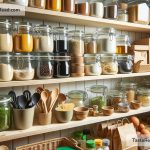How to Choose Organic, Regenerative Coffee for Sustainable Cooking
Are you a coffee lover who also cares deeply about the planet? If so, you’ve likely heard about organic and regenerative farming practices and how they can contribute to a healthier planet. But when it comes to your daily cup of joe, how do you make sure you’re choosing the best option for the environment? Let’s dive into the world of coffee and discover how you can make your coffee habit more eco-friendly.
First off, what does it mean for coffee to be organic or regenerative? In simple terms, organic coffee is grown without synthetic pesticides or fertilizers, making it better for the environment and often for the farmers’ health. Regenerative coffee goes a step further by using farming practices that improve the soil, capture carbon, and enhance the ecosystem. This means not just doing less harm, but actually making a positive impact.
So, how can you choose coffee that’s both delicious and supports sustainable cooking? Here are a few tips:
1. Look for Certifications
The easiest way to ensure you’re getting what you pay for is to look for certifications on the packaging. Organic certifications show that the coffee was grown without synthetic inputs, while certifications like Rainforest Alliance or Bird Friendly indicate environmental and wildlife conservation efforts. Another label to look for is Fair Trade, which, while not directly related to farming practices, ensures better economic conditions for coffee farmers.
2. Research the Brand
Not all coffee brands are transparent about their sourcing and farming practices, but many of those committed to sustainability will provide detailed information on their websites. Look for information about where and how their coffee is grown. Brands that are proud of their regenerative and organic practices will often share stories about their farmers and their commitment to sustainability.
3. Consider the Packaging
Sustainable cooking isn’t just about the food itself but also about how it’s packaged. When choosing your coffee, consider how it’s packaged. Is the packaging recyclable or compostable? Some companies now use biodegradable packaging, which is a great step towards reducing waste.
4. Buy Whole Beans
Buying whole beans and grinding them yourself not only ensures fresher coffee but also reduces waste. Pre-ground coffee often comes in additional packaging for freshness, which ends up in the landfill. Plus, you’ll have more control over the size of the grind, allowing you to extract the best flavor from each bean.
5. Think Global, Buy Local
While coffee is grown in tropical regions and not locally for most of us, you can still support local businesses by buying from local roasters. These small businesses often have direct relationships with the coffee farmers and can provide detailed information about the sustainability practices in use. Plus, you’re supporting your local economy – a win-win!
6. Experiment with Lesser-Known Varieties
Farmers who are making the shift towards regenerative practices often grow unique, heirloom varieties of coffee that are not only delicious but also help maintain biodiversity. By choosing these coffees, you’re supporting innovative practices and getting to enjoy wonderfully rich and diverse flavors. It’s an excellent opportunity to explore the vast world of coffee beyond the usual blends.
7. Brew Sustainably
Choosing organic, regenerative coffee is an essential step towards sustainable cooking, but how you brew your coffee matters too. Consider using a French press, AeroPress, or pour-over method, which don’t require electricity or wasteful pods. If you use a machine, look for one with a reusable filter. And, of course, always compost your coffee grounds if you can – they’re great for the garden!
In Conclusion
Making the switch to organic, regenerative coffee may seem like a small step, but it’s a meaningful one. By carefully selecting your coffee, you’re not just enhancing your culinary experience; you’re contributing to a movement that benefits the planet, supports farmers, and promotes biodiversity. Enjoy your coffee knowing that each sip supports a more sustainable and delicious world. Cheers to that!
Choosing the right coffee is an integral part of sustainable cooking and living. With the above tips, you’ll be well on your way to making informed choices that are better for both the planet and your palate. So next time you’re stocking up on coffee, take a moment to consider its origin, how it was grown, and the impact its production has on the world. Every choice counts, and yours can brew a better future.


